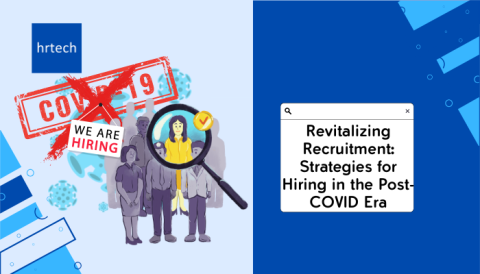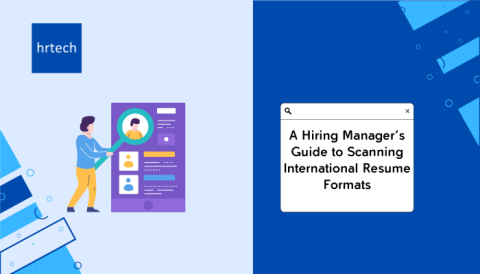As a Chief People Officer or HR leader, you’re likely familiar with the challenges of filling vacancies quickly. External recruitment can be expensive and time-consuming, putting pressure on your team to find qualified candidates fast. In the rush to fill these roles, it’s easy to overlook internal talent that could be right in front of you.
Recent data highlights the growing importance of internal recruitment. A study by Harvard Business Review found that after World War II, 90% of vacancies were filled through internal promotions. Today, that number is much lower, showing how organizations are missing opportunities to promote from within.
Gallup’s Employee Retention and Attraction Indicator reports that 51% of U.S. employees are actively seeking new job opportunities. LinkedIn data further shows that career advancement is the most common reason employees consider leaving their roles.
These facts point to a larger issue: poor retention, often caused by a lack of internal career mobility, is driving the need for external hiring. In this blog, we’ll explore Internal Job Postings (IJP), the benefits of internal recruitment, and the challenges that come with it.
TL;DR
- Internal job postings help cut recruitment costs by filling positions with internal candidates instead of external hires.
- Promoting from within increases employee retention by offering clear career progression opportunities for current staff members.
- Relying solely on internal candidates can limit your options when employees lack the necessary skills or experience.
- Clear communication of eligibility criteria and a transparent hiring process ensure fairness for all employees involved.
- To avoid office politics, it’s essential to keep the selection process objective and accessible to everyone.
What is an Internal Job Posting?
An Internal Job Posting (IJP) is when organizations post job openings to current employees before considering external candidates. This process encourages existing staff to apply for new roles within the company. IJPs help organizations promote from within, offering employees opportunities for career advancement and development.
Instead of seeking external candidates, companies turn to their existing workforce to fill vacancies. This approach is beneficial for both the organization and employees. Employees can see clear pathways for growth while organizations retain valuable talent and save on recruitment costs.
Benefits of Internal Job Posting
Internal Job Postings (IJP) offer several key advantages for both employees and organizations. These benefits can be directly linked to improved employee satisfaction, cost savings, and more efficient recruitment processes.
By tapping into your existing talent pool, you can reduce the time and money spent on external recruitment while encouraging employee growth. Below are the key benefits of implementing an IJP system:
- Cost Savings: Filling roles internally reduces the need for external recruitment services, saving on advertising and agency fees.
- Faster Onboarding: Internal candidates are already familiar with the company culture and processes, reducing the time needed for onboarding.
- Employee Retention: Offering career growth opportunities through internal promotions helps retain top talent and reduces turnover.
- Improved Engagement: Employees feel more engaged when they see that their hard work can lead to career advancement within the company.
- Better Cultural Fit: Internal candidates are already aligned with the company’s values, leading to a better fit within the team.
By promoting from within, companies can create a loyal workforce and reduce the costs associated with hiring externally. Let’s now look at some challenges that come with internal job postings.
Challenges of Internal Job Posting

While internal job postings offer numerous advantages, they also come with specific challenges. Addressing these challenges is essential to ensure a fair and efficient process for all employees involved.
Some common challenges include the perception of favoritism, limited candidate pools, and navigating internal politics. Below are key challenges to consider:
- Perception of Favoritism: Employees may feel that promotions are not always based on merit, leading to dissatisfaction among staff.
- Limited Candidate Pool: Internal postings may limit your options, especially if employees lack the required skills or experience.
- Internal Politics: Office politics and seniority can impact the selection process, making it harder to ensure fairness.
- Confidentiality Concerns: Some roles require a level of confidentiality, and open postings may risk leaking sensitive information.
- Resistance to Change: Employees might resist moving to new roles if they are comfortable in their current positions.
Despite these challenges, organizations can overcome them by establishing transparent processes and communication around internal job postings. Now, let’s look at how to successfully share job openings internally.
How to Share Job Openings Internally
Effectively sharing job openings within your organization is key to the success of your internal recruitment strategy. Clear communication and easy access to job postings ensure that employees are aware of new opportunities.
Here’s how you can effectively communicate internal job postings within your organization:
- Intranet or Internal Job Board: Post job openings on the company intranet or a dedicated job board to ensure easy access for employees.
- Email Announcements: Send out email notifications to alert staff about new openings, including job details and application instructions.
- Team Meetings: Share job openings during team meetings to regularly remind employees of internal opportunities.
- Manager Recommendations: Encourage managers to inform their teams about available positions and encourage them to apply.
- Clear Guidelines: Provide detailed instructions on how employees can apply, eligibility criteria, and the timeline for each position.
With these methods in place, employees will have the information they need to apply for roles and advance their careers. Let’s now consider some best practices for ensuring the success of internal job postings.
Best Practices for Successful Internal Job Postings
To ensure your internal job posting process is successful, it’s essential to follow certain best practices. These practices will help foster fairness, transparency, and employee engagement throughout the recruitment process.

By following these guidelines, you can improve the effectiveness of internal recruitment while maintaining a positive company culture:
- Clear Eligibility Criteria: Define who is eligible to apply and ensure that all employees know the requirements for each role.
- Transparency in the Process: Clearly communicate the selection process and criteria to employees, ensuring they understand how decisions are made.
- Encourage Diversity: Promote internal mobility across different departments and levels to encourage diversity and fresh perspectives.
- Offer Feedback: Provide constructive feedback to all applicants, regardless of the outcome, to help them grow and stay motivated.
- Internal Talent Development: Invest in training and development programs to equip employees with the skills needed for future roles.
These best practices can help ensure that your internal job posting system is fair, inclusive, and beneficial for both the company and its employees. Let’s now look at a free internal job posting template you can use.
Free Internal Job Posting Template
To make the process of posting jobs internally easier, using a template can help maintain consistency and clarity. A well-structured template ensures that all relevant information is included and communicated effectively.
Here’s a simple internal job posting template that you can adapt to your organization’s needs:
Company Name: [Insert Company Name]
Position Title: [Insert Job Title]
Department: [Insert Department Name]
Location: [Insert Office/Remote/Hybrid]
Reports To: [Insert Manager’s Title]
Job Summary
This role focuses on key responsibilities that support company goals and drive team success. It provides growth and development opportunities within the team.
Key Responsibilities
- [Responsibility 1]
- [Responsibility 2]
- [Responsibility 3]
- [Responsibility 4]
- [Responsibility 5]
Qualifications and Requirements
- [Required Skill 1]
- [Required Skill 2]
- [Required Skill 3]
- [Education or Certifications]
- [Experience required]
Preferred Skills and Experience:
- [Preferred Skill 1]
- [Preferred Skill 2]
- [Preferred Skill 3]
Eligibility Criteria
Employees must meet specific requirements to apply for this position. Please review the eligibility criteria carefully before submitting your application.
Example:
- Must have worked at [Company Name] for at least [X months/years].
- [Additional internal qualifications, if applicable.]
How to Apply
Interested employees should submit their application by [insert deadline]. Include an updated resume and a cover letter explaining your interest in the role.
Submit your application to:
[Name of HR or Hiring Manager]
[Email Address]
Important Notes
- Only current employees may apply for this position.
- Speak with your manager before submitting your application.
- We encourage internal mobility, so apply if you meet most requirements.
Application Deadline:
[Insert Date]
We encourage all eligible employees to apply. For questions, please contact [Contact Person’s Name] at [Contact Email or Phone].
By using a consistent internal job posting template, you can help ensure that employees are aware of the expectations and requirements for each role. Now, let’s consider how to wrap up this discussion on internal job postings.
TeamLease: Empowering Recruitment and Workforce Transformation
TeamLease offers a range of services to help organizations address recruitment and workforce management challenges. With a focus on staffing, HR technology, and training, TeamLease simplifies workforce transformation.
Here are the key focus areas of TeamLease:
- Professional Staffing: TeamLease manages the entire hiring process with a team of over 200 talent acquisition professionals. AI tools improve sourcing efficiency and reduce time-to-hire.
- HR Technology Marketplace: Access to over 450 HR technology solutions across the employee lifecycle, tailored to company size, industry, and transformation goals.
- HR Advisory and Consulting: TeamLease helps businesses evaluate HR processes, redesign them, and adopt the right technology to boost HR effectiveness.
- Enterprise Learning: Offering blended learning programs through over 10,000 trainers. This includes induction programs, certifications, and custom content development aligned with business needs.
These services enable organizations to enhance their recruitment processes and workforce management effectively.
Conclusion
Internal job postings offer a clear path to employee growth and retention. By focusing on internal talent, companies not only reduce costs but also build a more committed workforce. When handled transparently and fairly, the process can boost employee morale and satisfaction. To ensure its success, organizations need to establish clear guidelines and communication methods.
If you’re looking to improve your internal recruitment strategy, TeamLease Digital can help. We provide expert HR services to support and enhance your workforce management efforts.
FAQs
Q: What is an Internal Job Posting (IJP)?
A: An Internal Job Posting (IJP) is when a company advertises job openings to current employees before considering external candidates. This allows employees to apply for new roles within the organization.
Q: Why should companies consider using internal job postings?
A: Internal job postings help companies save on recruitment costs, promote employee growth, and retain talent. They also speed up the onboarding process, as internal candidates are already familiar with the company’s culture and operations.
Q: What are some challenges of internal job postings?
A: Challenges of internal job postings include perceived favoritism, limited candidate pools, and internal politics influencing the selection process. Confidentiality concerns may also arise when roles require discretion.
Q: How can organizations ensure transparency in internal job postings?
A: To ensure transparency, companies should clearly communicate eligibility criteria, the selection process, and expectations for applying. This helps reduce misunderstandings and builds trust in the system.
Q: What are some best practices for internal job postings?
A: Best practices include having clear eligibility guidelines, offering feedback to applicants, and promoting internal mobility across departments. Additionally, investing in employee development programs can prepare staff for future roles.







